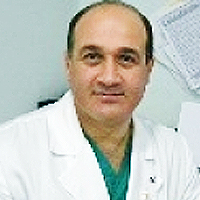About King Fahad Medical City
King Fahad Medical City
Articles by King Fahad Medical City
Factors influencing referral delay of cancer patients to an oncology unit in the Southern Region of Saudi Arabia
Published on: 20th August, 2021
OCLC Number/Unique Identifier: 9194011239
Introduction: Cancer treatment and prognosis depend heavily on early detection. Survival in the early stages is excellent for almost all types of cancer. Unfortunately, in Saudi Arabia, a large number of cancer patients present with advanced disease, resulting in a poor prognosis. There are three levels of delay in the management of cancer patients. The first level is the time between the first cancer-related symptoms and the presentation to the health facility, the second level is from the presentation to the diagnosis, and the third level is between the diagnosis and the treatment. This study aims to determine if there is a delay, at what level and to study the factors causing such delays.Materials and methods: Two hundred cancer patients who presented to the Armed Forces Hospital Southern Region, Oncology Department, were interviewed from January 1st to June 30th, 2018. The interviews were conducted by trained physicians familiar with the questionnaire’s contents. The questionnaire consisted of four sections: a demographic section and three more sections to identify factors causing the delay at the three levels from the patients’ perspectives. All data were analyzed using the SPSS version 20.0.Results: The mean patient age was 63 years. A total of 112 patients were female and 88 were male. The most common cancer type was breast cancer (27.5%). Among the patients, 61% were illiterate and 25.5% had elementary school degrees, 86% expressed little or no general medical knowledge about cancer. More women than men paid attention to cancer symptoms (70% vs. 54%). 75% of the patients presented to the first health facility after 2 months from the first appearance of symptoms (level 1 delay). Only 2% of the patients presented within one week. 50% of the patients received a diagnosis after visiting two health facilities. All patients were diagnosed at hospitals. 40% of patients used alternative medicines, 70% of whom thought this was the cause of their delayed presentations. 67% had their diagnosis confirmed within one month (level 2 delay), and 66% started their definitive treatment within one month (level 3 delay). 75% of the patients blame themselves for the delay. Educational level (p = 0.03), knowledge about cancer (p < 0.01), and the use of complementary and alternative medicines (CAM) (p = 0.01) were significantly associated with delayed presentation of patients to the health facility. Conclusion: There is a delay in the presentation of cancer patients (level 1) in the southern part of Saudi Arabia. Educational level, knowledge of cancer symptoms, and use of complementary and alternative medicines are the main causes. There were no delays in diagnosis and start of treatment (level 2,3).
Prevalence and awareness of oral habits among adults in Riyadh, Saudi Arabia
Published on: 20th September, 2022
Introduction: Oral habit is common in childhood and it is proven to cause multiple adverse effects on oral and general health, while oral habits in the adult population are under looked. The prevalence of oral habits varied among different societies. The extent of these effects varies depending on a wide range of variables including the actual habit, the duration, and the intensity of the oral habit. Objectives: The primary objective is to determine the prevalence of oral habits in adults in Riyadh, Saudi Arabia, and the secondary objective is awareness of different types of oral habits and their adverse effects.Methods: Descriptive cross-sectional study using questionnaire through google form which will address the prevalence of 5 Oral habits in the adult population, Riyadh, Saudi Arabia such as nail biting, chewing on pens/pencils/Miswak, using the teeth as a tool, chewing ice, and teeth clenching/grinding and bruxism. Also, it will address the awareness of these 5 oral habits and their adverse effects on oral health and prevention modalities. Results: There were 220 participants. The majority were Saudi (52.7%), females (83.2%) with bachelor’s degrees (63.6%) and around fifty percent with age below 30 years old. The most prevalent pattern was using teeth as a tool (46.8%), followed by chewing ice (43.6%) and nail-biting (39.1%). All five habits were mainly started in childhood; however, a respectable percentage of beginning is still reported during adulthood, particularly for clenching/grinding/ bruxism and chewing ice, with a ratio of 36.4% and 25%, respectively. Most participants who reported clenching/grinding/ bruxism and nail-biting were related to stress (75.3%, 48.8%, respectively). The majority reported that oral habits could harm teeth (82.3%) and could be preventable (78.6%).Discussion: Most of the studies concentrate on oral habits in children while few studies had concentrated on oral habits in adults. Oral habit is not uncommon in adults, they have either to continue childhood bad habits or practice new oral habit. The adverse effect varies widely on oral and general health. Although the adult population is aware of these side effects few only seek medical advice.Conclusion: In Saudi Arabia, oral habit is not uncommon in adults. So the recommendation for the prevention of oral habits is to embed it in all public services, at strategic and operational levels.
Prevalence of performance-enhancing drug use among gym members in Saudi Arabia, Riyadh: A cross-sectional survey
Published on: 27th December, 2022
Context: Illicit and performance-enhancing drug (PED) use is prevalent among athletes.Aims: We examine the prevalence of PED use among amateur athletes, identify the common characteristics and associated risk factors for illicit PED use and measure the perception and awareness among gym members regarding the safety and effects of illicit drug use.Settings and design: This cross-sectional study was conducted among adult male and female gym center attendees in Riyadh, Saudi Arabia.Methods and materials: Self-administered Arabic and English questionnaires were used for data collection. Statistical analysis used: SPSS version 26 was used to perform t- and chi-square tests.Results: This study included 379 participants, of whom 59.6% were male, 52.8% were between 26 and 35 years of age, and a majority of the participants had normal (47.5%) or overweight (40.9%) body mass index. Our study revealed a high prevalence (48.5%) of PED use among gym athletes in Riyadh, Saudi Arabia. Moreover, the true prevalence might have been higher due to the possibility of underreporting by some participants because of the sensitivity of the subject. Protein powder was the most commonly used type of PED. Of all the participants, 22.3% reported anabolic androgenic steroid use. Side effects of PEDs were observed in 19% of the study participants.Conclusion: The results of this study should encourage public health researchers and health advocates to design and implement behavioral interventions to educate the public on the benefits, risks, and contraindications of dietary supplements used by athletes to enhance their body performance.Key messages• Performance-enhancing drug (PED) use is prevalent among both professional and amateur athletes.• Gym athletes in Riyadh, Saudi Arabia, report increasing PED use.• Side effects and negative health impacts are associated with illicit PED use.• Misinformation on the risks and benefits of PEDs is a major public health concern.• More efforts should be implemented in public awareness about the risk of using PED targeting younger populations.

If you are already a member of our network and need to keep track of any developments regarding a question you have already submitted, click "take me to my Query."















































































































































